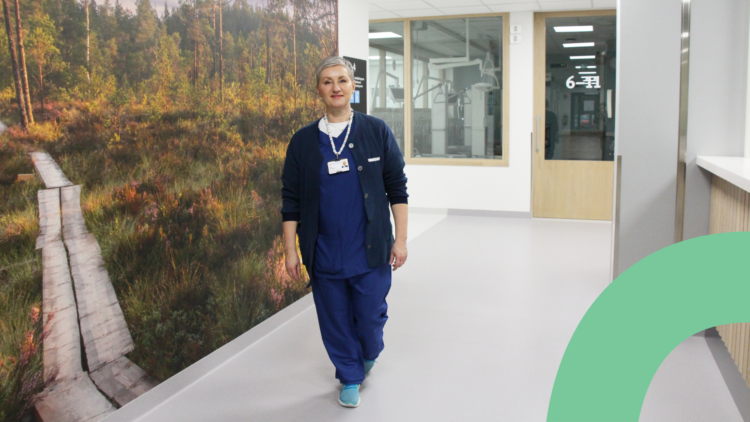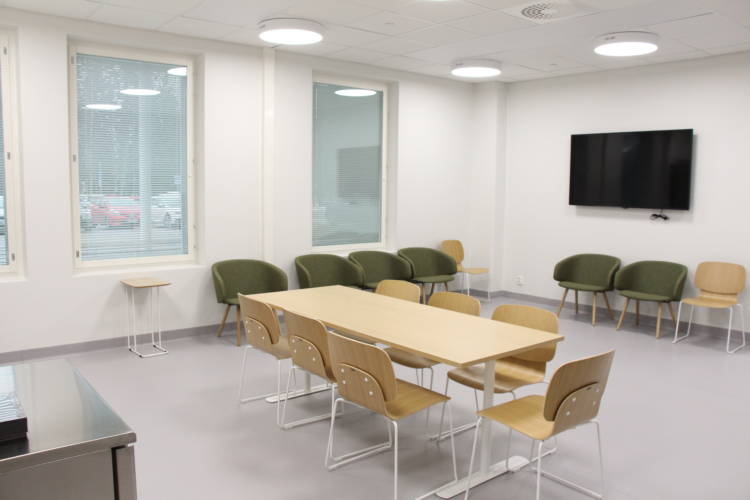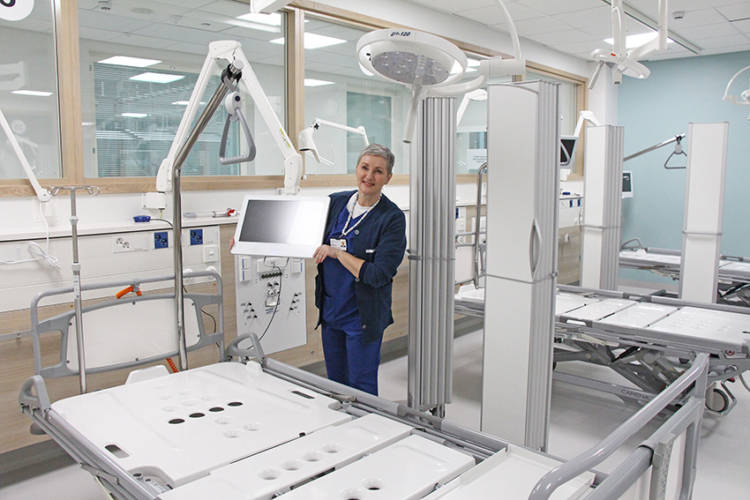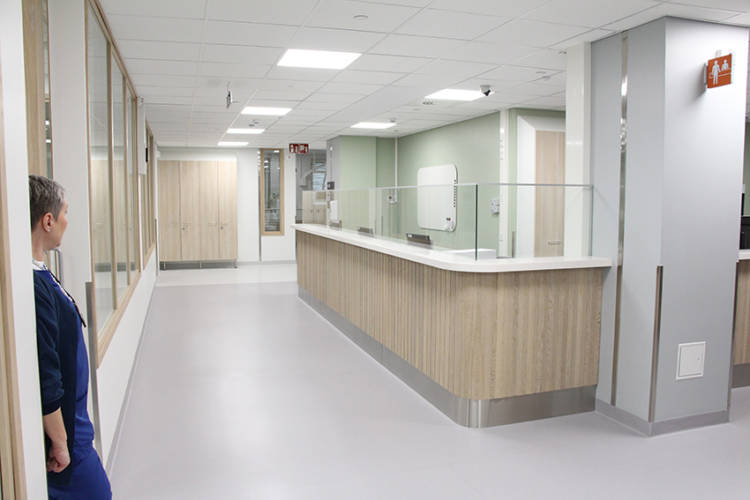Dialysis enters a new era

When the Dialysis Unit of Vaasa Central Hospital moves to the new H-building, it will have access to the most modern dialysis facilities in Finland. The staff are happy that the long wait is finally over and that they now work in a healthy environment with a lot of space. The number of patient beds will increase from ten to twenty, which means that more patients can be cared for in the future.
The move from Floor 0 in the E building of the central hospital to Floor 0 in the H-building was carefully planned to ensure that any breaks in the care of the patients would be kept to a minimum. Dialysis will be closed due to the move for only one day – namely 8 February. From 9 February, dialysis patients will receive treatment in the new facilities.
– Patients always come in for their dialysis on the same day of the week and at the same time. The move will cause some temporary changes in treatment times. But we have carefully planned the first day in the new facilities and we will also have more members of staff on hand so that everything runs smoothly, says the coordinating head nurse, Kirsi Vaaranmaa.

The parking spaces at the dialysis entrance are only for dialysis clients.
Dialysis patients will have their own parking space and entrance on the south side of the H-building – between the parking garage and the Accident & Emergency department. And it is important, from Week 6 onwards, that these parking spaces are reserved for only those who need them.
– Our dialysis patients will receive a parking permit that they can put on the car’s windshield. Cars parked without a permit can expect a parking fine, says Vaaranmaa.
Patients have their own monitors
The new facilities have both beds and treatment chairs for patients. Each treatment station has its own monitor, i.e. computer screen, where you can watch a programme you want or browse websites. This will help the time to pass comfortably, because the dialysis treatment lasts for several hours.

presents the monitor that is in every patient’s place.
The Dialysis Unit also offers a new form of service called the studio. Here, patients can perform their hemodialysis treatment themselves according to their own schedule when the unit is open, i.e. on Mondays, Wednesdays, and Fridays from 07:15–20:00. You can enter after 15:00 by ringing the doorbell. On Tuesdays, Thursdays and weekends, the dialysis is open until 15:00.
– We also teach those wanting to become more independent how to set up and use the dialysis machine. Even those who normally manage their dialysis at home can come to the studio for their treatment, for example if there is a problem with the quality of the household water, says Vaaranmaa.
New ways of working
The move to the new facilities also brings with it a major change in the staff’s working methods and shifts.
–The core of the care work does not change, but everything around it will. We now have much more space and new technology, which brings flexibility to both patients and staff. We are able to treat more patients during the day, which means that the staff don’t have to work in the evenings more than three nights a week, says Vaaranmaa.

Shortly after the move, staff will begin using a patient data system that is linked to the dialysis machines, eliminating double entries and piles of paper.
– We then no longer need to enter every detail into the computer, because the information is transferred directly with the help of a chip from the dialysis machine to the computer. In addition, we can monitor the treatment via the computer in real time – which is why, for example, the doctor at the outpatient clinic can see how long a patient’s treatment will take via their own computer and then plan their visit accordingly.
Dialysis is used to treat severe kidney failure.
Dialysis partially replaces the normal function of the kidneys. In dialysis treatment, the blood is cleaned of impurities and excess fluid is removed from the body.
Dialysis treatment can be carried out at home or in a treatment unit through blood (hemodialysis) or by using the patient’s own peritoneum (peritoneal dialysis).
